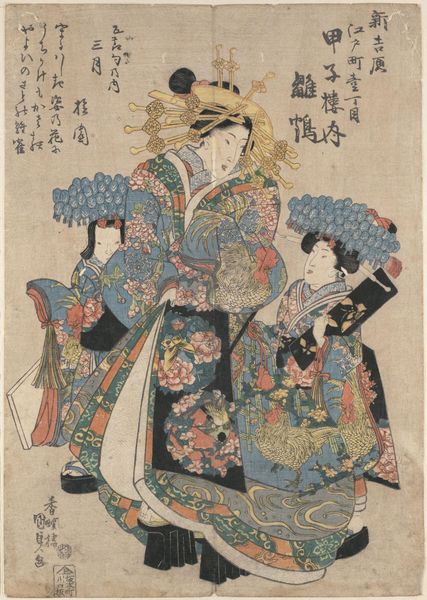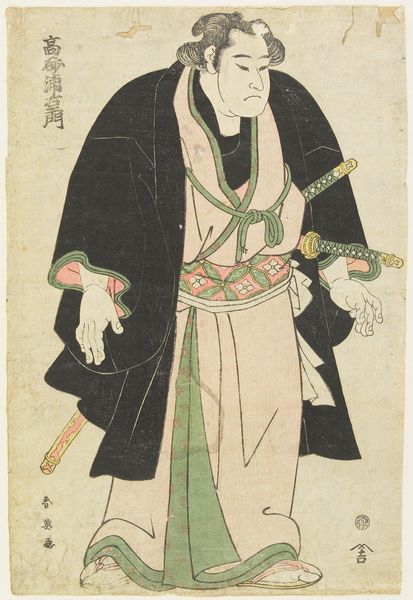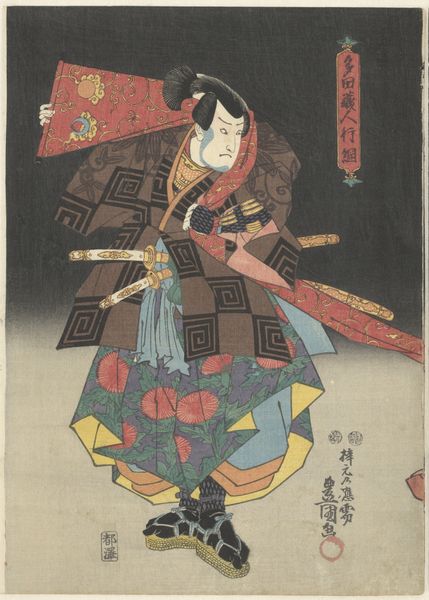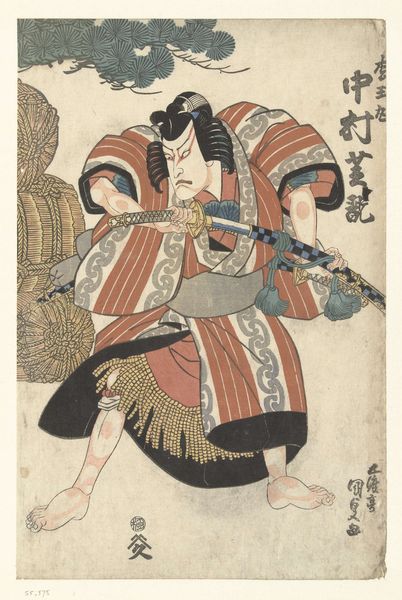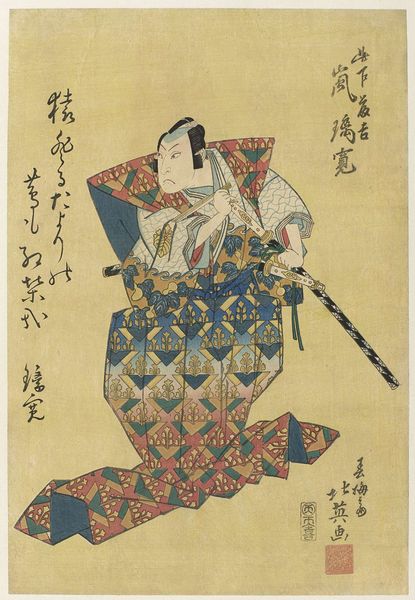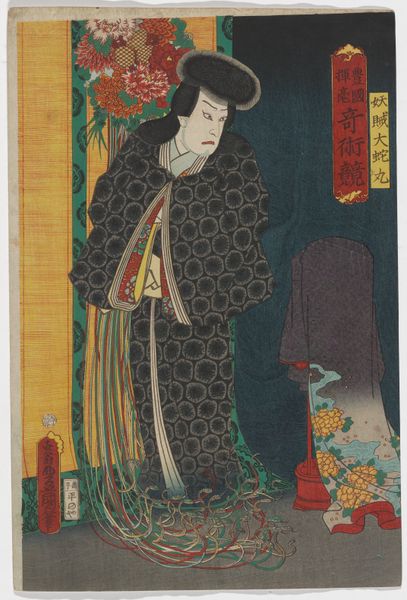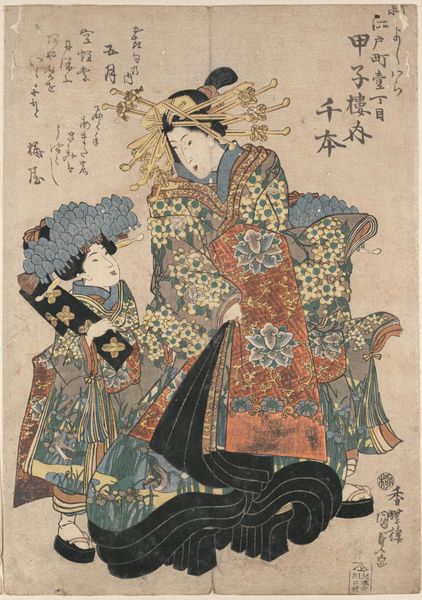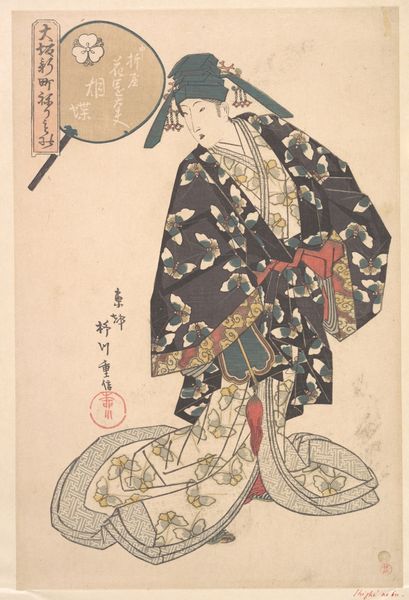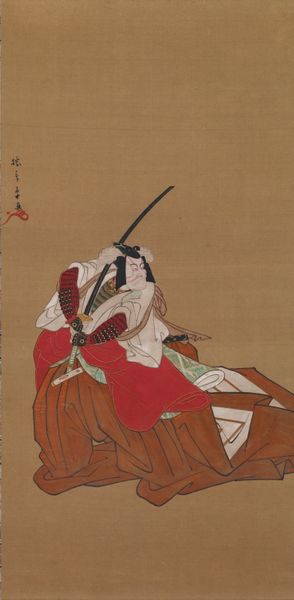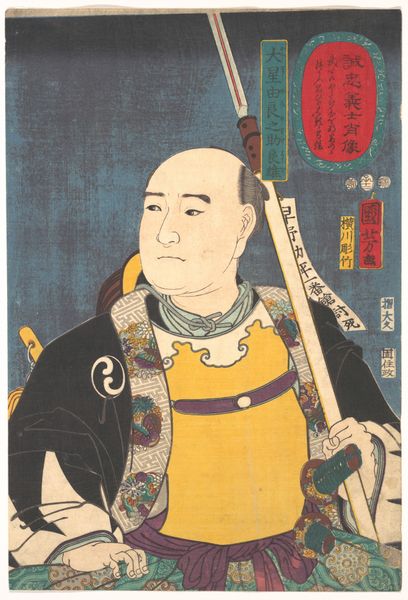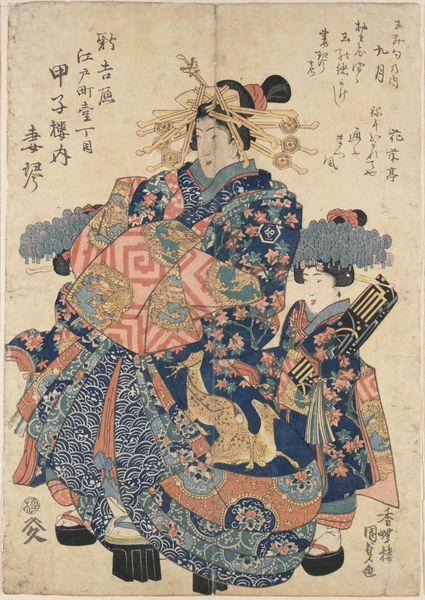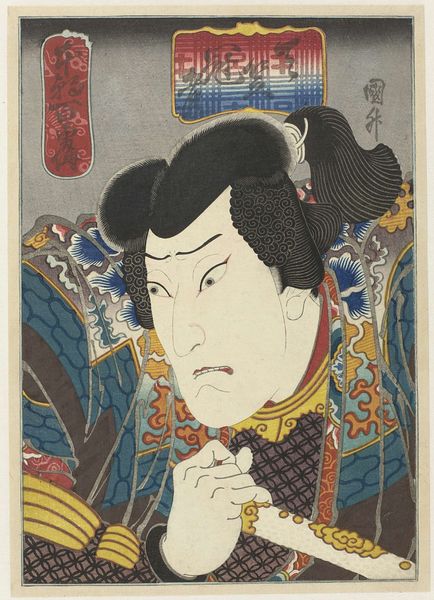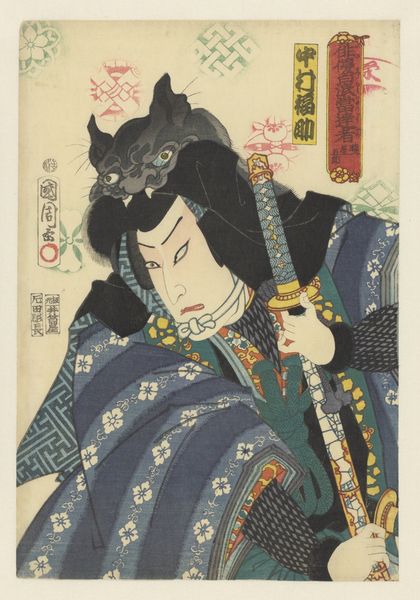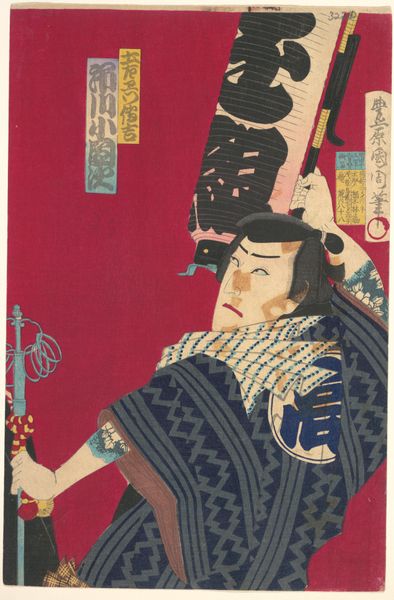
Kabuki actors play the role of 47 Ronin (Seichū gishi den) 1769 - 1900
0:00
0:00
print, woodblock-print
#
portrait
# print
#
asian-art
#
ukiyo-e
#
figuration
#
woodblock-print
#
sword
Dimensions: a–t: 14 x 9 1/4 in. (35.6 x 23.5 cm) (each) tt –uu: 6 3/4 x 9 1/4 in. (17.1 x 23.5 cm) (each)
Copyright: Public Domain
Curator: Here we have Utagawa Kunisada's "Kabuki actors play the role of 47 Ronin (Seichū gishi den)," a woodblock print, likely from around the late 19th century. Editor: My initial reaction is one of complex layering. There are several planes overlapping in a limited picture space, giving the portrait a sense of compression and theatricality. Curator: Precisely. Look at how Kunisada uses the print medium to denote status through symbolic costuming; note the layers of fabric rendered through careful carving and color choices to signify character. Editor: Yes, but the labor! Imagine the process, carving each block meticulously to achieve that detail. This isn't just ink on paper; it's a physical undertaking, a collaborative effort involving artists, carvers, and printers working together in workshops to produce popular imagery. And it suggests mass consumption too, it becomes available to a broader population because of these production methods. Curator: And it succeeds visually! Observe the strategic placement of text and symbols that function semiotically, they not only frame the actor, they add narrative depth, suggesting specific identities and plot elements. Consider the geometric pattern and colors on the character’s garments. Editor: Agreed. It brings up the fascinating contradiction inherent in Ukiyo-e: mass production celebrating what was considered a unique transient moment. Curator: Absolutely. One could analyze the Ronin’s expression to examine his psychological state through formalized facial codes, noting the ways in which internal conflict may be portrayed, referencing Kabuki's emphasis on stylized gestures. Editor: To truly appreciate the beauty and historical importance of such prints, we should consider the physical, hands-on processes of its creation—the people, materials, and places behind this striking Kabuki portrait. Curator: Very well, and through considering its visual semiotics and cultural encoding, the print speaks to ideas about character representation and Japanese theatrical expression.
Comments
No comments
Be the first to comment and join the conversation on the ultimate creative platform.
